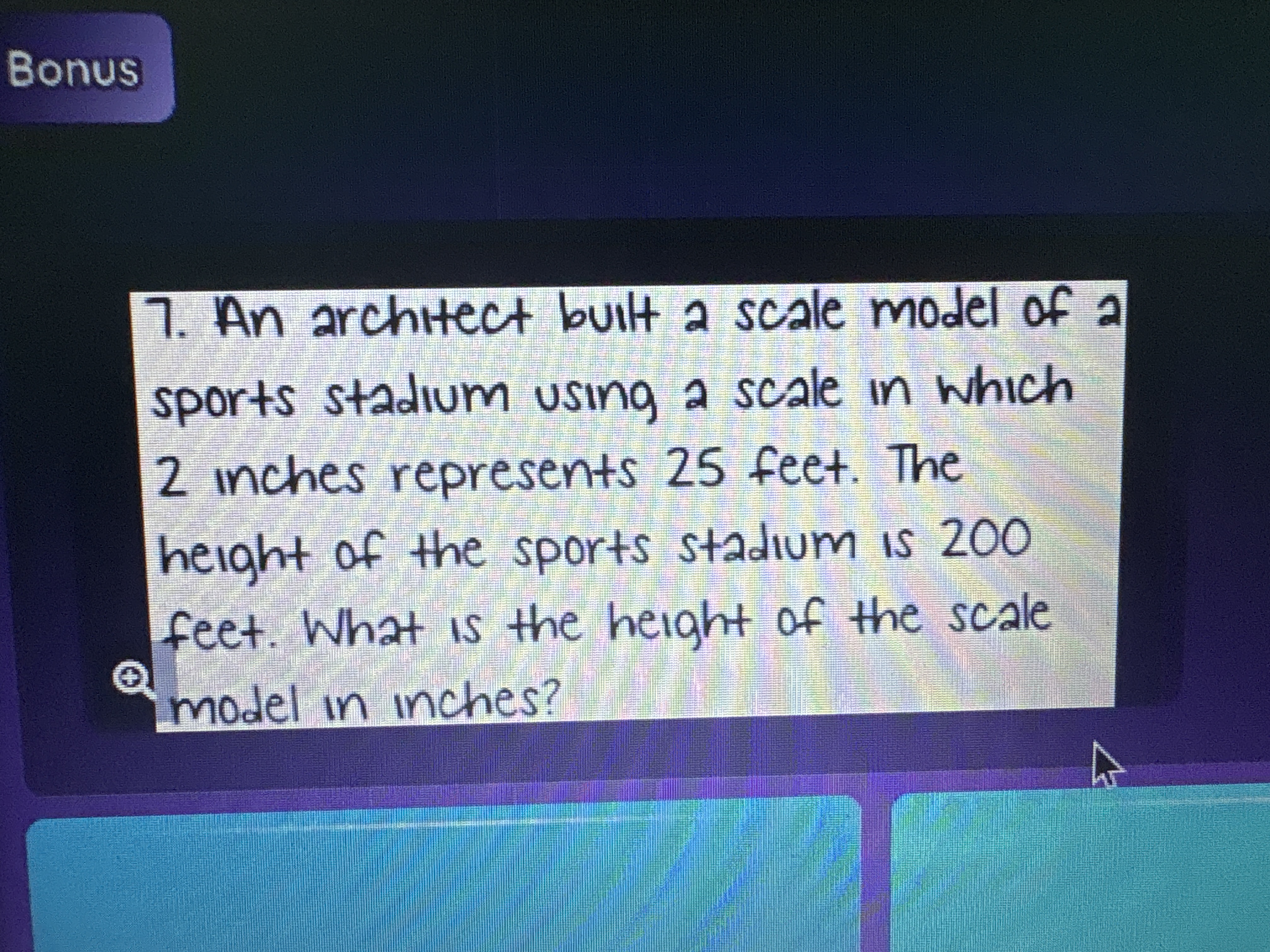An architect built a scale model of a sports stadium using a scale in which 2 inches represents 25 feet. The height of the sports stadium is 200 feet. What is the height of the sca... An architect built a scale model of a sports stadium using a scale in which 2 inches represents 25 feet. The height of the sports stadium is 200 feet. What is the height of the scale model in inches?

Understand the Problem
The question is asking for the height of a scale model of a sports stadium given the height of the actual stadium and the scale ratio. The height of the actual stadium is 200 feet, and the scale of 2 inches represents 25 feet. To solve it, we need to set up a proportion based on these values.
Answer
The height of the scale model is \( 16 \) inches.
Answer for screen readers
The height of the scale model is ( 16 \text{ inches} ).
Steps to Solve
- Set up the proportion
We know that 2 inches represents 25 feet. We need a proportion to find the height of the scale model, which we can denote as ( h ). This gives us the initial ratio:
$$ \frac{2 \text{ inches}}{25 \text{ feet}} = \frac{h \text{ inches}}{200 \text{ feet}} $$
- Cross-multiply to solve for ( h )
Next, we can cross-multiply the equation to isolate ( h ):
$$ 2 \text{ inches} \cdot 200 \text{ feet} = 25 \text{ feet} \cdot h \text{ inches} $$
This simplifies to:
$$ 400 \text{ inches} \cdot \text{ feet} = 25 \cdot h $$
- Divide both sides by 25
To find ( h ), divide both sides of the equation by 25:
$$ h = \frac{400 \text{ inches} \cdot \text{ feet}}{25 \text{ feet}} $$
This simplifies to:
$$ h = 16 \text{ inches} $$
The height of the scale model is ( 16 \text{ inches} ).
More Information
In scale modeling, proportions are crucial as they help maintain accurate representations of real-life objects. The scale used here is common in architectural models, where smaller representations are critical for visualization and planning.
Tips
- Not setting up the ratio correctly: Make sure to keep units consistent between the actual size and the model size.
- Incorrect cross-multiplication: Double-check the multiplication to ensure accurate calculations when isolating variables.
AI-generated content may contain errors. Please verify critical information